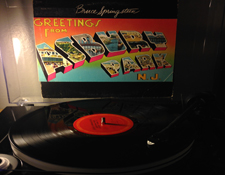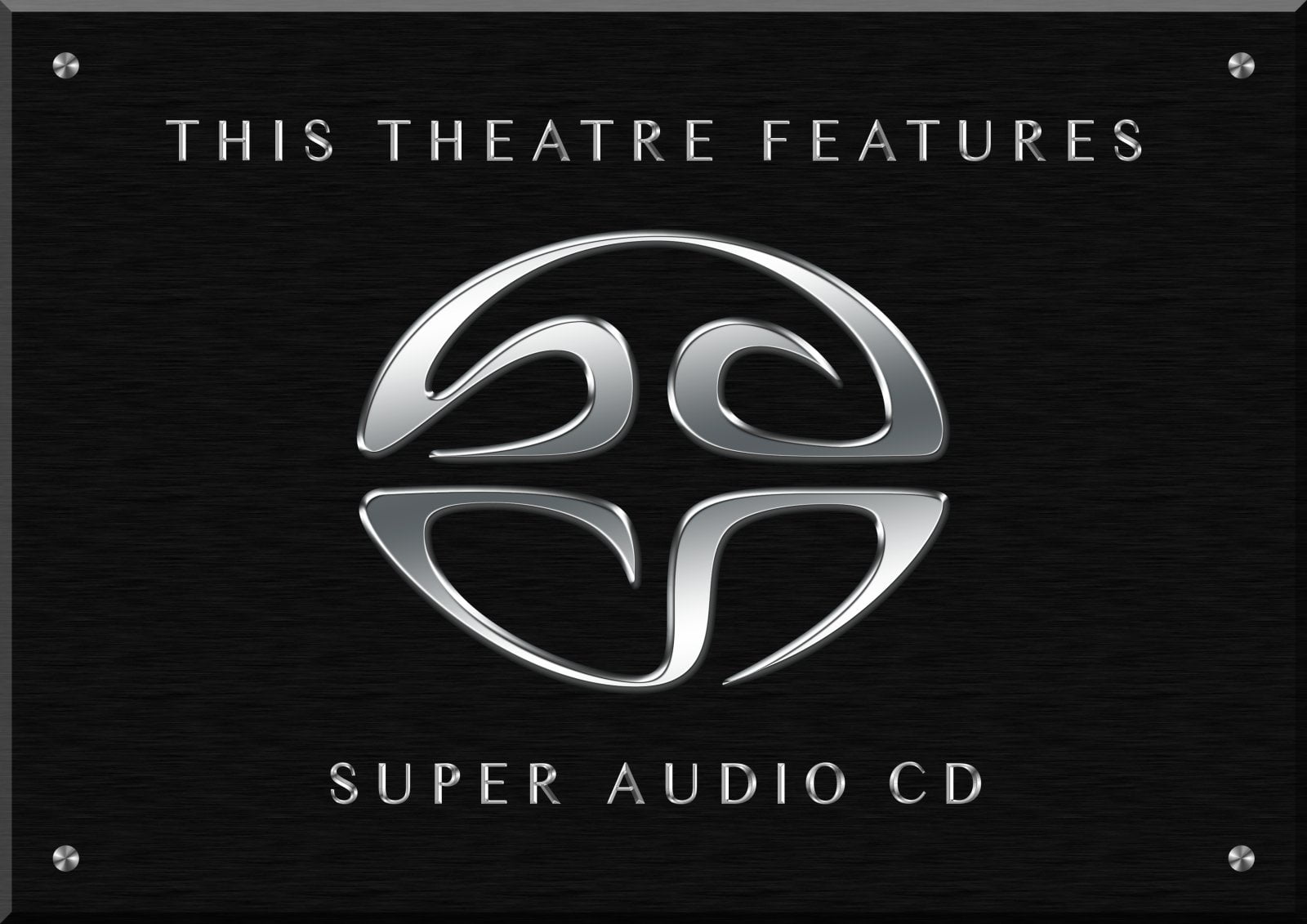It’s the time of year for saving money!
I remember the first time I heard Greetings From Asbury Park; one of my older brothers brought it home not long after it came out. Listening closely, that album felt like an older buddy from the neighborhood that I never knew who was recounting tales of the stuff I was starting to see happening around me as I ventured out and around my hometown in New Jersey. I was about to become a teenager and Bruce Springsteen’s music was about to become a big part of the soundtrack of my adolescence.
 So for me to write something like “Bruce Springsteen’s 1973 debut is near and dear to my heart: would be sort of an understatement. Greetings From Asbury Park — and the follow-on, The Wild, the Innocent & the E-Street Shuffle — very much set the stage for my journey out into the big world, providing a lot of perspective on what to expect as I took “my right at the light and kept going straight until night….”
So for me to write something like “Bruce Springsteen’s 1973 debut is near and dear to my heart: would be sort of an understatement. Greetings From Asbury Park — and the follow-on, The Wild, the Innocent & the E-Street Shuffle — very much set the stage for my journey out into the big world, providing a lot of perspective on what to expect as I took “my right at the light and kept going straight until night….”
I learned quickly to hum my own lunar tunes.
I’m stating all this because its important (for me) to recognize that this fanboy perspective could easily sway my opinion when trying to do a review.
“Could,” of course is the operative word there. The reality is, I’m from NJ and that just isn’t how we roll there. Most of us folks from NJ are straight-shooters, you see.
All that said, I’ll tell you one of the really neat things about listening to Greetings from Asbury Park in high resolution: it sounds just as it’s supposed to sound, even though it is no doubt much much clearer now.
When I hear the LP version, it sounds good but there is a sort of murkiness that was always a part of the album’s charm. Greetings From Asbury Park is not a fancy production, and the album was made in a small, pre-fame low-budget studio. But the performances are heartfelt and that comes through even when it is played through a 3-inch car speaker. Of course, that IS one of the bigger points with regards to appreciating Bruce’s music.
Still, there is a much improved sense of clarity and definition on this new remaster that is very appealing. You can feel Bruce’s acoustic guitar ringing out on the quiet parts of “Mary Queen of Arkansas.” Likewise, you can really hear how those charmingly out-of-tune double-tracked guitars at the start of “Does This Bus Stop at 82nd Street?” blend in with the almost out of tune (probably upright) piano masterfully played by the great David Sancious.
Perhaps the problem was a sort of audio quicksand and not so much mud after all.
One of the real heroes on this album is Bruce’s first drummer Vincent “Mad Dog” Lopez, who usually, unfortunately, gets lost in the flood in the wake of Mighty Max Weinberg’s joining Bruce’s E-Street Band for the third album. Lopez’s playing sounds much tighter on this new version of Greetings From Asbury Park, and I’m not talking just about the fidelity of the transfer. I am talking about the seeming steadiness and — if you will — rock-full-ness of his playing.
This is all real subtle stuff, folks, but after just re-listening to the LP version and then putting on the high-resolution HDTracks download, I’m hearing a far more driving drummer than the original recording conveyed. While Lopez was not quite the Pete Best of the E-Street Band, and sure he is not the uber-tasteful time-keeper that Max is renown for, it may be time to re-evaluate Lopez’s contributions now that we are hearing a far steadier incarnation of this album. This is happening courtesy of the Plangent Process that dramatically corrects mechanical anomalies in the tape recording process from back in the day, particularly “wow” and “flutter.” These are acknowledged technical glitches which the recorded music world has lived with since its inception and now we are first starting to hear what the music sounds like when digitally correcting those issues.
]]>One of the side benefits of correcting these anomalies is sometimes a stronger sense of groove.
 Playing “For You” is like hearing this song again for the first time. The speed and tempo is just far more propulsive than the original LP, jumping out of the speakers like it was a remix, not just a remaster. With the DSP restoration by Plangent Processes, it’s pretty evident that something got lost in translation from the original performance to what was documented on the tape — wow and flutter ever so subtly but palpably held the song’s heartbeat prisoner. So now we can finally really feel that beat via Vinnie Lopez’s kick drum and snare! The guy was no doubt way looser and a busier player than Max, but he could play!
Playing “For You” is like hearing this song again for the first time. The speed and tempo is just far more propulsive than the original LP, jumping out of the speakers like it was a remix, not just a remaster. With the DSP restoration by Plangent Processes, it’s pretty evident that something got lost in translation from the original performance to what was documented on the tape — wow and flutter ever so subtly but palpably held the song’s heartbeat prisoner. So now we can finally really feel that beat via Vinnie Lopez’s kick drum and snare! The guy was no doubt way looser and a busier player than Max, but he could play!
Saints in the city…
Bruce’s voice on “The Angel” sounds remarkable, a reminder that he was not just a fine street poet, but a damn great singer right from the get-go. Richard Davis’s gorgeous, mostly overlooked and forgotten bowed upright bass playing on that song is much more evident on this new remaster.
The CD version of the restored Greetings From Asbury Park sounds pretty good overall, bearing much of the same sonic blueprint as the HDTracks/Plangent Processes restoration version. And even at low volumes it sounds quite solid as far as CDs go — the acoustic guitars are distinct on tracks like “Growin’ Up” and “For You.” The drums are round and punchy overall.
It sounds real good in the car, which makes so much sense for a Bruce record.
Really, the only problem I have with the CD is when you start to turn up the volume, then you really start to notice the negative effects of CD compression (which has nothing to do with the restoration or the remastering). It just is what it is — part of the process of chopping down the music files to the 16-bit/44.1-kilohertz size required for the CD “red book” standard.” This is notable on vocals and the high end especially, which makes the sounds quite a bit more hard-edged than the 24/96 download version.
When you play the high-resolution HDTracks version you can feel the room sound around David Sancious’ jazz-blues-tinted piano intro to “Its Hard to Be a Saint in the City,” as well as in the breaks during the song. That nearly 3D feeling is much less palpable on the CD version, the piano sounding much flatter and more two dimensional.
Still all in all, both the CD and HDTracks download versions of Greetings From Asbury Park offer a noticeable improvement over the original LP. If you don’t have this album, these new remastered and restored versions are a great way to experience Bruce’s auspicious debut. If you haven’t listened to the album a long time, they are a great way to re-consider a wonderful Bruce Springsteen album that quickly got overshadowed by his later output.
Greetings From Asbury Park is important in order to fully understand Bruce’s music on the grander scale. Greetings… is the place where I think everyone should start listening to Bruce. It is the place where many of his character profile songs begin. It’s the place where he began spinning tales about Mary Queen of Arkansas, Crazy Janey, Wild Billy and Hazy Davey, Jimmy the Saint and the Ragamuffin Gunner, Rex and Mary Lou … the list goes on.
Now you can meet all these characters on the backstreets of your home entertainment system, sounding clearer than ever, just by listening to Greetings From Asbury Park in new and improved high-resolution, high-fidelity, Plangent Processed stereophonic sound.
But don’t take it from me…
Wild Billy said it best himself …
“He said, ‘Trust some of this, it’ll show you where it’s at. Or at least it’ll really help you feel it.'”






